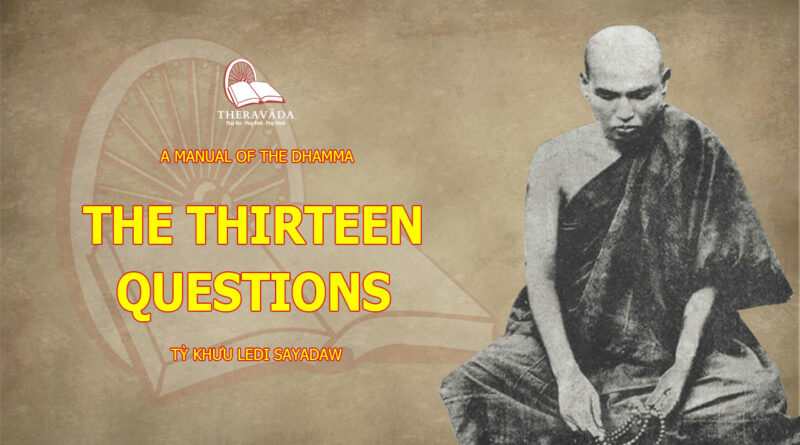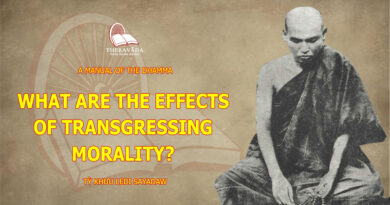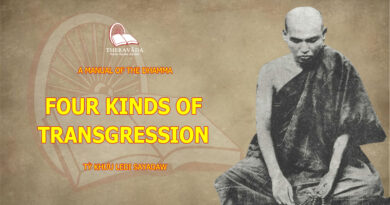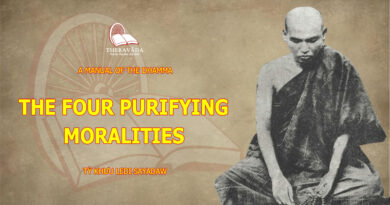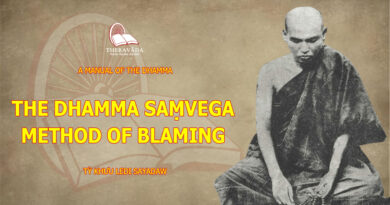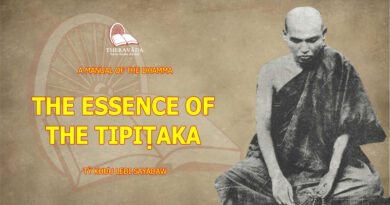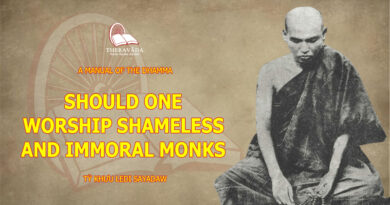A Manual of the Dhamma
Dhamma Dīpanī
On July 1901 seven laymen from Okkan village put thirteen questions, to which I will give answers. They are devoted laymen, namely, Taka Circle Headman Maung Po O, Rest House Donor Maung Shwe La, Pagoda Builder U Baw, Monastery Donor Saya Saing, Monastery Donor Maung Htut, Pagoda Spire Donor Maung Shwe Ye, and Supporter Maung Nge. They, and some villagers, asked these thirteen questions regarding the problems of monkhood and its relationship with the laity. I will now give a concise answer to each question.
The Thirteen Questions
- Nowadays in the Buddha’s dispensation there are three different types of monks, namely: lajjī (one with a moral conscience, a scrupulous monk), alajjī (one with no moral conscience, a shameless monk), and dussīlo (without ethical conduct, a bad, fallen, immoral monk). So we wish to know the factors or characteristics embracing each type as mentioned in the Pāḷi texts, Commentaries, and Subcommentaries. Kindly give the factors to classify each type.
- Should those who know the truth about shameless and immoral monks refrain from associating with and paying respect to them? Does this agree with the verse in the Maṅgala Sutta that advises one to avoid the foolish (asevanā ca bālānaṃ)? Is a lay person who shows disregard by shunning bad monks following the injunction of the Maṅgala Dhamma? We would like to know of scriptural evidence and examples regarding the good or bad results from this action.
- Should those who know the truth about shameless and immoral monks continue to pay respect and offer requisites? Are they following the Maṅgala Dhamma that advises us to associate with the wise (paṇḍitānañca sevanā)? Is this behaviour following the advice given in the Maṅgala Sutta or not? Kindly give evidence and case histories regarding good or bad results from this act.
- If a person offers the four requisites such as almsfood, knowing a monk to be shameless or immoral, does this amount to the Maṅgala Dhamma that says one should honour the worthy (pūjā ca pūjaneyyānaṃ), or is this contrary to that advice? Kindly let us know the good or bad results with appropriate case histories and evidence.
- If a person pays respect and shows deference by greeting, bowing, etc., knowing a monk to be shameless or immoral, does he fulfil the Maṅgala Dhamma that says that one should pay respect to the worthy or honourable ones (gāravo)? Does his behaviour agree with the text that says one should pay respect only to those who possess good conduct? The text referred to is in the Kosala Saṃyutta. By worshipping bad monks does one accomplish a reliable refuge? Kindly give evidence or examples to show the right way in this matter of honouring bad monks.
- If one speaks ill of a monk or condemns him, either directly or indirectly, knowing him to be shameless or immoral, does one attract ten evil punishments or not? Is one free from evil with this act?
- If a shameless monk becomes afraid of suffering in saṃsāra, or if he acquires moral dread, how can he become a scrupulous monk? Is it possible for him to become a scrupulous monk?
- Should lay persons learn the Vinaya? Does this kind of learning agree with the Maṅgala Dhamma that advises one to be well-trained in discipline (vinayo ca susikkhito)? What are the good or bad results of this act? Kindly give evidence or examples to prove a definite point.
- Should a monk teach the monastic discipline to a lay person? What are the good or bad results of this? Please give some evidence.
- Kindly give the detailed factors or characteristics of each of the four purifying moralities (pārisuddhi sīla). You may give each its characteristic, function, manifestation, and proximate cause.
- Among the four purifying moralities, what are the bad effects if a monk transgresses basic monastic restraint (Pātimokkha saṃvara sīla). What are the good effects if a monk observes it? Kindly explain the remaining three types of purifying morality, which may have good or bad effects according to observance or non-observance.
- What are the factors of offerings made to the whole Saṅgha (saṅghikadāna)? How can we perform this type of donation?
- Of the two types of donation, offerings to the Saṅgha and offerings to the Enlightened One, which has greater merit?

